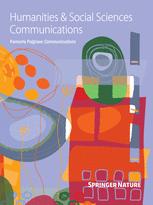Although deforestation and forest degradation have long been considered the most significant threats to tropical biodiversity, across Southeast Asia (Northeast India, Indochina, Sundaland, Philippines) substantial areas of natural habitat have few wild animals (>1 kg), bar a few hunting-tolerant species. To document hunting impacts on vertebrate populations regionally, we conducted an extensive literature review, including papers in local journals and reports of governmental and nongovernmental agencies. Evidence from multiple sites indicated animal populations declined precipitously across the region since approximately 1980, and many species are now extirpated from substantial portions of their former ranges. Hunting is by far the greatest immediate threat to the survival of most of the region's endangered vertebrates. Causes of recent overhunting include improved access to forests and markets, improved hunting technology, and escalating demand for wild meat, wildlife-derived medicinal products, and wild animals as pets. Although hunters often take common species, such as pigs or rats, for their own consumption, they take rarer species opportunistically and sell surplus meat and commercially valuable products. There is also widespread targeted hunting of high-value species. Consequently, as currently practiced, hunting cannot be considered sustainable anywhere in the region, and in most places enforcement of protected-area and protected-species legislation is weak. The international community's focus on cross-border trade fails to address overexploitation of wildlife because hunting and the sale of wild meat is largely a local issue and most of the harvest is consumed in villages, rural towns, and nearby cities. In addition to improved enforcement, efforts to engage hunters and manage wildlife populations through sustainable hunting practices are urgently needed. Unless there is a step change in efforts to reduce wildlife exploitation to sustainable levels, the region will likely lose most of its iconic species, and many others besides, within the next few years. © 2016, Society for Conservation Biology..
DOI:
https://doi.org/10.1111/cobi.12785
Puntuación Altmetric:
Dimensiones Recuento de citas:



















